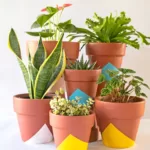Tomatoes are one of the most popular vegetables to grow in home gardens, and many gardeners have questions about how best to care for them. One such question is whether or not you should be removing bottom leaves from tomato plants. As a horticulturalist or plant scientist, I’m here to answer this important question!
In order to make sure that your tomatoes remain healthy and productive throughout their growing season, it’s important to understand the importance of pruning tomato plants. Pruning can help increase airflow around the foliage and reduce disease pressure on the fruit-bearing branches. It also helps with maintaining an even canopy height which allows for better sunlight penetration into lower parts of the plant.
So when it comes down to it: should you cut off those pesky bottom leaves? To find out, we need to take a closer look at what these leaves actually do for your tomato plants and why it’s important (or not) to remove them periodically during the growing season. Stick around – I’m going to share all my pro tips so that you can get maximum deliciousness out of every single one of your homegrown tomatoes!
Definition Of Pruning
Pruning is the practice of cutting away parts of a plant, such as leaves and branches, to promote its growth or improve its shape. It’s an essential part of gardening and horticulture, especially when it comes to tomatoes! Pruning tomatoes specifically can be done in various ways with different techniques that have certain benefits.
For instance, pruning off lower leaves on tomato plants encourages them to grow upwards instead of sprawling out across the ground. This helps keep their fruits clean which is ideal for harvesting purposes. Additionally, removing any dead foliage from tomato plants ensures they get adequate light and air circulation so they stay healthy and productive throughout the season.
It’s also important to note that pruning should only be done after a tomato plant reaches maturity – not too soon or else it won’t reach its full potential size and yield. With proper timing and technique, you’ll be able to maximize your tomato harvest while ensuring the healthiest possible crop for years to come!
Benefits Of Pruning Tomatoes
Now that we’ve established what pruning is, let’s discuss the benefits of pruning tomatoes. Pruning tomato plants can enhance yield and even improve fruit quality. It also helps to keep your plants healthy by encouraging better growth with fewer problems such as disease or insect infestations. Here are three primary advantages of pruning tomatoes:
- Increased Yields: By removing some leaves from the bottom of the plant, you’ll be able to get more air circulation around the foliage which will help reduce potential diseases and pests while allowing for more sunlight penetration into the center of the plant, leading to increased yields over time.
- Healthier Plants: Removing unnecessary leaves at the base of a tomato plant allows it to focus its energy on growing larger fruits rather than maintaining many small ones; this keeps your plants healthier and happier overall!
- Improved Fruit Quality: By pruning off excess branches and leaves, you’ll be able to ensure that each fruit gets enough light exposure throughout its life cycle so that it develops properly and reaches full maturity without becoming diseased or misshapen due to overcrowding by other fruits or foliage below them.
Pruning has multiple benefits for both farmers and home growers alike – from increasing yields to improving fruit quality – but knowing when exactly to do it is just as important! That’s why our next section will dive into details about when specifically you should start pruning your tomatoes for optimal results.
When To Prune Tomatoes
Pruning tomatoes may seem like an intensive process, but with the right timing and technique it can be a simple task. Knowing when to prune tomato plants is key in ensuring healthy growth and strong yields. Generally speaking, you should begin pruning your tomatoes by mid-season or late spring. This gives the plant enough time to develop roots, foliage and fruit before being trimmed back for optimal health.
When it comes to pruning season for tomato plants, there are two main approaches: hard pruning and soft pruning. Hard pruning involves cutting off all of the lateral branches at once to promote robust new growth from the base of the plant; this approach works well if you want larger fruits sooner in the season. Soft pruning requires more frequent trimming of lateral shoots throughout the growing period so that each branch produces only one or two fruits per stem; this method results in smaller yields but higher quality produce over a longer harvest window.
No matter which approach you choose, always start by removing any dead leaves or stems near the bottom of the plant – this helps improve air circulation around its canopy and prevent fungal diseases from taking hold. As far as actual leaf removal goes, don’t worry too much about pinching out lower leaves unless they’re yellowing or damaged – these provide necessary shade during hot summer days and help protect against sunburned fruits! With proper care and timely intervention, your tomato plants will thrive through their entire life cycle – now let’s talk about tools for pruning them!
Tools For Pruning Tomatoes
Pruning tomatoes is like giving a haircut – you need the right tools for the job. For tomato plants, this means having access to pruning shears, saws, snips and clippers, ratchet pruners and loppers. Each of these tools has its own unique purpose in tomato plant care.
Pruning shears are your go-to tool when it comes to trimming leaves off tomato plants. They have long handles that allow users to easily reach deep into the plant’s foliage. Pruning saws can be used if branches or stems become too thick for regular scissors. Snips and clippers work well on delicate shoots and twigs that require precise cutting without damaging other parts of the plant. Ratchet pruners are more powerful than regular scissors, making them great for thicker branches. And finally, loppers can handle larger stems with ease due to their longer handles and wider blades.
No matter which tool you use for pruning your tomatoes, make sure you take proper safety precautions before beginning any gardening project! With the right tools at hand and a few simple safety tips in mind, you’ll be ready to start pruning your tomato plants for optimal growth and health.
How To Prune Tomato Plants
Pruning tomato plants is an important part of the cultivation process. There are two methods of pruning that can be used for tomatoes – cutting off leaves and removing stems. The most common pruning technique is to cut off the bottom leaves from the plant as this helps promote good airflow, encourages healthier fruit production, and prevents disease. When using this method, it’s best to make sure you don’t remove too many leaves at once; start with just a few then work your way up if needed. Additionally, when pruning care should be taken not to damage other parts of the plant or leave jagged edges on any remaining leaves.
Another cutting method involves removing stems above a certain point in order to control size and shape. This can also help reduce foliage density which aids in better air circulation through the plant. To do so, locate a healthy node along the stem then use sharp scissors to carefully snip off all growth above it. If done properly this will encourage new side shoots to form resulting in more branches covered with flowers and fruits!
These tips can help ensure that your tomato plants remain healthy while still receiving enough maintenance throughout their growing season. With proper pruning techniques and understanding what needs to be done, gardeners can reap the rewards of juicy tomatoes come harvest time!
Potential Problems With Pruning Tomato Plants
It’s important to take caution when pruning tomato plants because incorrect or over-pruning can cause damage. Pruned tomatoes may suffer from stunted growth, reduced yields, and weakened defense mechanisms against pests and diseases. To avoid these problems, it is essential to understand the potential consequences of pruning before getting started.
Below is a table that outlines some common issues associated with pruning tomato plants:
| Issue | Description | Solution |
|---|---|---|
| Over-pruning | Cutting too much foliage off the plant. | Remove only dead/diseased leaves as needed for healthier growth. Avoid cutting healthy leaves unless absolutely necessary. |
| Incorrect Pruning | Removing branches in an improper manner (i.e., removing too many lateral shoots at one time). | Ensure proper technique when pruning by following guidelines such as making angled cuts instead of straight ones and avoiding long stems on large plants. |
| Tomato Leaves Turning Yellow/Brown | Poor nutrition caused by insufficient access to sunlight due to excessive leaf removal during pruning. Also known as “sunscald” or “leaf scorch.” | Provide ample light and airflow by limiting foliage removal during pruning sessions; this will ensure adequate photosynthesis takes place for healthier growth overall. |
Taking the time to properly prune your tomato plants is key in ensuring their health throughout the growing season and beyond. When done correctly, you should be left with a productive garden full of vibrant tomatoes! However, if not done correctly, you could end up dealing with several damaging issues which could harm your yield significantly – so always make sure you know what you’re doing before starting your pruning session! Now that we’ve covered the potential problems associated with pruning tomato plants, let’s move onto discussing post-pruning care tips to help keep your tomatoes thriving all season long!
Post-Pruning Care
After you have cut the bottom leaves off of your tomato plants, it’s important to give them some post-pruning care. There are a few steps that can help ensure your plant stays healthy and produces delicious tomatoes! Here are some tips for how to care for your pruned tomato plants:
First, make sure you’re giving them enough water – this is especially important during hot summer days. When watering, be careful not to overdo it; too much water can cause root rot and other issues. Second, fertilizing your tomato plants with compost or an organic fertilizer will provide nutrients needed for growth. Lastly, check on their sunlight requirements; depending on what type of tomatoes you’re growing, they may need more or less direct sunlight than other varieties. With these simple care tips in mind, you should be able to keep your tomatoes looking great all season long!
Conclusion
Pruning tomato plants is a delicate and important process that can help you maximize your harvest. With the right tools and knowledge, pruning tomatoes can be an easy task to take on at home. It’s like sculpting art from nature; by carefully removing leaves from the bottom of the plant, you are helping it focus its energy on producing bigger fruit higher up in the vine.
Always remember to handle your tomato plants with care when pruning them. If done correctly, you will be rewarded with bumper harvests of juicy tomatoes for months! Take some time to learn about potential problems associated with pruning so that you know what symptoms to look out for if something starts going wrong. And don’t forget post-pruning maintenance: make sure the soil stays moist and fertilized so that your tomato plants have all they need to thrive.
Overall, pruning tomato plants can seem intimidating but with a bit of practice and patience it becomes second nature. So go ahead – give yourself permission to get creative and trim away those lower leaves – just watch where you’re snipping!




